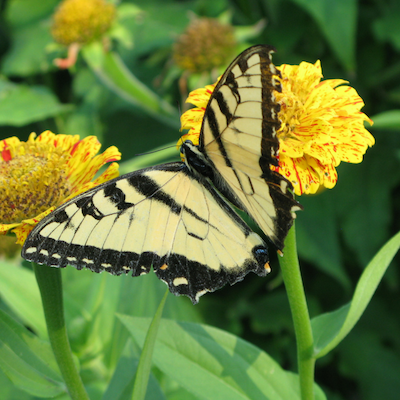If the pruners have been burning a hole in your garden glove, go ahead and trim up the lilac, forsythia, viburnum and other spring-blooming shrubs, if needed. Waiting to prune risks the removal of next spring’s flowers.
Remember pruning is the selective removal of branches for specific reasons, none of which fall into the “make be a ball” or “make me a tabletop” category. Pruning corrects branches crossed or rubbing against each other, are dead or they exhibit errant growth. Some shrubs may need to be pruned for size because they are growing into the house or encroaching a sidewalk. If the mature height and width of the shrub is considered at planting time, you may never have to prune to control size.
Hard to find zinnias
A lot of gardeners have not been able to find their favorite zinnia plants at many garden centers. MIAs are zinnias favored for cut flowers, such as State Fair Mix or Cut and Come Again.
Zinnia seeds practically sprout at the word dirt, so buy a seed packet or two of these annuals and direct sow seeds in the soil now for flowers in a month or so. Some gardeners sow zinnia seeds every week to 10 days to extend their cut flower joys. The butterflies will thank you, too.

Hard to find milkweed
Also scarce this year are many types of perennial milkweed (Asclepias), especially swamp (A. incarnata) and common (A. syriaca). Butterfly weed (A. tuberosa), or as I like to call it, butterfly flower does seem readily available. Common and swamp are preferred by monarch butterflies for egg laying and caterpillar munching.
Unfortunately, milkweed is a little more complicated to grow from seed. It needs a period of cold, called stratification, in order to germinate. Seed packets provide good information.
Rain, rain, rain
A lot of my plants are looking pale, especially the leaves of those I’ve had for a while. Indianapolis’ extended rainy season has taken a toll on a lot of plants, especially annuals.
All of this rain results in fast growth of lush green. The seemingly constant rain washes nutrients from the soil. It probably wouldn’t hurt to give plants in containers an extra shot of fertilizer.
Some plants are just plain miserable, especially sun-lovers like lantana and geraniums, which may actually be drowned and starved for sunlight. All of this rain also promotes fungus disease on begonias, impatiens and other plants, causing them to rot or develop fuzzy leaves. If any of these describe your plants, go ahead and replace them because they won’t likely come back. Garden centers still have decent selections to get you through the season.
Thank you for the photo credit!
Pat
National Garden Bureau